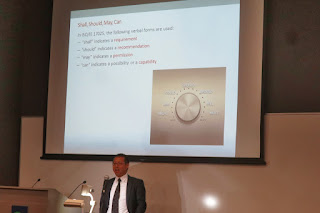Hong
Kong Innovation Management Institute (香港創新管理學院) (HKIMI) and Global Innovation Management
Institute (GIMI) co-organized a seminar named “Developing Innovation Competence
through Life-long Learning” cum “Kick-off Ceremony & Innovative Leader
Development Forum”. I (Chairman, HKSQ) was
honor to be invited by Mr. David T.W. Chung (President, HKIMI) to join this
seminar and ceremony.
I met many friends and took a photo for memory. Dr. Victor Lo (President, ISIHK) and I took a photo.
I took a
photo with Mr. Daniel KF Choi (Programme Development Manager, SCOPE, CityU).
I also
met Mr. Edmond Fung (GM, Training Service and Market Research, HKQAA), Ms.
Miranda Kwan (Director, Certification and Business Enhancement, SGS HK Ltd.)
and representative of GIMI.
I met the speaker Dr. Hitendra Patel (Director, GIMI) and took a photo for memory.
In the beginning,
Mr. David T.W. Chung (President, HKIMI) gave welcome speech and introduced the
innovation management professional to promote innovation in Hong Kong.
Then
they took a group photos.
The
first speaker was Dr. Hitendra Patel (Director, GIMI) and this topic included “Why
Innovate?”, “Generating Big Ideas”, “Making it Real” and “Monday Morning”.
Dr.
Patel said change was inevitable and became faster and faster. He raised some
examples such as Apple iPhone killed Nokia and Motorola mobile. Forces of the future were summarized as
Greenovate, Connectivate, Healthovate and Robovate.











































